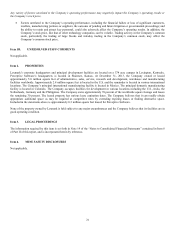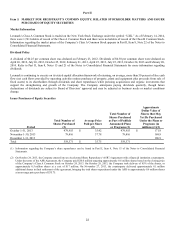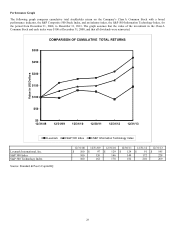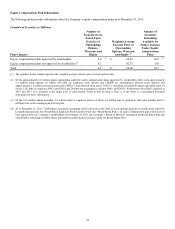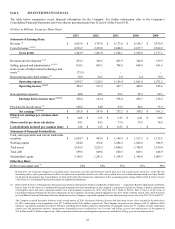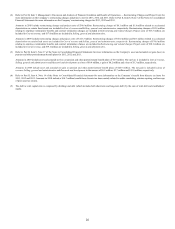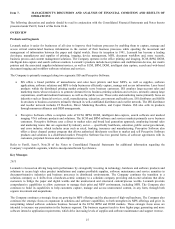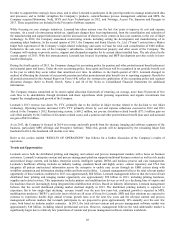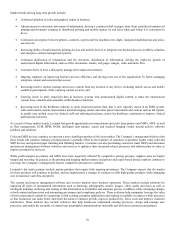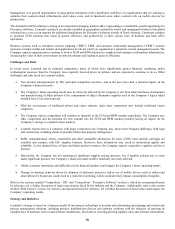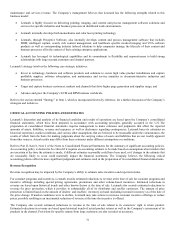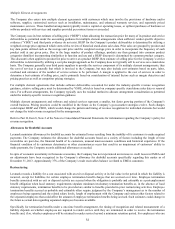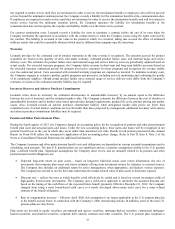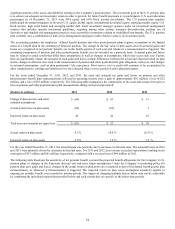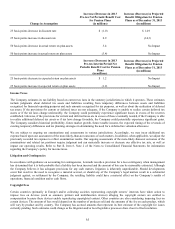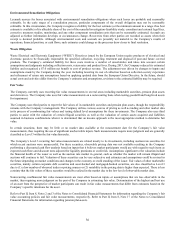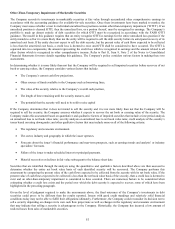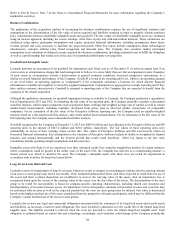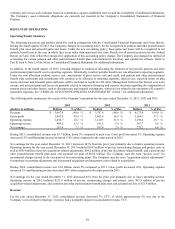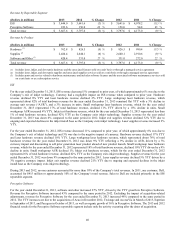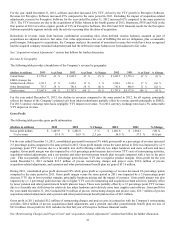Lexmark 2013 Annual Report Download - page 35
Download and view the complete annual report
Please find page 35 of the 2013 Lexmark annual report below. You can navigate through the pages in the report by either clicking on the pages listed below, or by using the keyword search tool below to find specific information within the annual report.maintenance and services revenue. The Company’s management believes that Lexmark has the following strengths related to this
business model:
Lexmark is highly focused on delivering printing, imaging, and content and process management software solutions and
services for specific industries and business processes in distributed work environments.
Lexmark internally develops both monochrome and color laser printing technology
Lexmark, through Perceptive Software, also internally develops content and process management software that includes
DOM, intelligent capture, search, rich content management, and healthcare specific medical imaging and VNA software
products as well as corresponding industry tailored solutions to help companies manage the lifecycle of their content and
business processes all in the context of their existing enterprise applications.
Lexmark has leveraged its technological capabilities and its commitment to flexibility and responsiveness to build strong
relationships with large-account customers and channel partners.
Lexmark’s strategy involves the following core strategic initiatives:
Invest in technology, hardware and software products and solutions to secure high value product installations and capture
profitable supplies, software subscription, and maintenance and service annuities in document-intensive industries and
business processes;
Target and capture business customers, markets and channels that drive higher page generation and supplies usage; and
Advance and grow the Company’s ECM and BPM business worldwide.
Refer to the section entitled “Strategy” in Item 1, which is incorporated herein by reference, for a further discussion of the Company’s
strategies and initiatives.
CRITICAL ACCOUNTING POLICIES AND ESTIMATES
Lexmark’s discussion and analysis of its financial condition and results of operations are based upon the Company’s consolidated
financial statements, which have been prepared in accordance with accounting principles generally accepted in the U.S. The
preparation of consolidated financial statements requires management to make estimates and judgments that affect the reported
amounts of assets, liabilities, revenue and expenses, as well as disclosures regarding contingencies. Lexmark bases its estimates on
historical experience, market conditions, and various other assumptions that are believed to be reasonable under the circumstances, the
results of which form the basis for making judgments about the carrying values of assets and liabilities that are not readily apparent
from other sources. Actual results may differ from these estimates under different assumptions or conditions.
Refer to Part II, Item 8, Note 2 of the Notes to Consolidated Financial Statements for the summary of significant accounting policies.
An accounting policy is deemed to be critical if it requires an accounting estimate to be made based on assumptions about matters that
are uncertain at the time the estimate is made, if different estimates reasonably could have been used, or if changes in the estimate that
are reasonably likely to occur could materially impact the financial statements. The Company believes the following critical
accounting policies affect its more significant judgments and estimates used in the preparation of its consolidated financial statements.
Revenue Recognition
Revenue recognition may be impacted by the Company’s ability to estimate sales incentives and expected returns.
For customer programs and incentives, Lexmark records estimated reductions to revenue at the time of sale for customer programs and
incentive offerings including special pricing agreements, promotions and other volume-based incentives. Estimated reductions in
revenue are based upon historical trends and other known factors at the time of sale. Lexmark also records estimated reductions to
revenue for price protection, which it provides to substantially all of its distributor and reseller customers. The amount of price
protection is limited based on the amount of dealers’ and resellers’ inventory on hand (including in-transit inventory) as of the date of
the price change. If market conditions were to decline, Lexmark may take actions to increase customer incentive offerings or reduce
prices, possibly resulting in an incremental reduction of revenue at the time the incentive is offered.
The Company also records estimated reductions to revenue at the time of sale related to its customers’ right to return product.
Estimated reductions in revenue are based upon historical trends of actual product returns as well as the Company’s assessment of its
products in the channel. Provisions for specific returns from large customers are also recorded as necessary.
31


